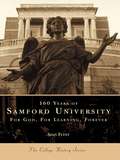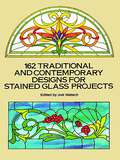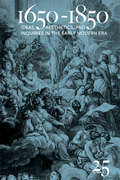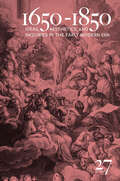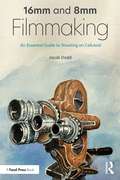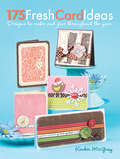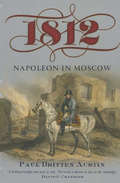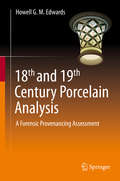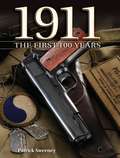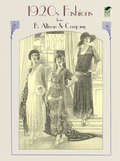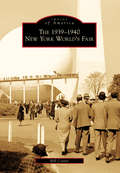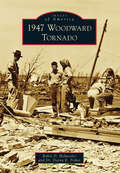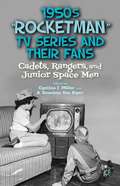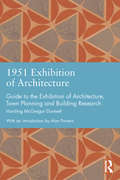- Table View
- List View
1500 mots par heure : Comment écrire plus vite, mieux et plus facilement
by N. P. Martin Leslie PierobonApprenez comment ÉCRIRE VITE et de façon professionnelle, et écrivez 1 500 mots par heure facilement. Le fait d'écrire est-il difficile pour vous ? Si c'est le cas, c'est probablement parce que vous n'utilisez pas de méthode adaptée. Mais pas n'importe quelle méthode. Je parle d'une méthode qui va non seulement vous permettre d'écrire plus rapidement, mais aussi de produire du travail de PLUS GRANDE QUALITÉ. Que vous écriviez des œuvres de fiction, des livres pratiques ou des essais, cette méthode va vous aider à écrire plus facilement. Vous allez produire 1 500 mots, ou même plus, chaque heure que vous allez passer à écrire. Mais comment atteindre ce but ? Le secret pour écrire autant est de séparer le temps de réflexion du temps d'écriture. Ce livre va vous montrer exactement comment faire de façon à ne plus être coincé à chercher vos mots, et à COMMENCER À GAGNER PLUS D'ARGENT avec vos écrits. Avec la méthode d'écriture rapide, les mots vont aisément vous venir TOUT LE TEMPS. Aussi incroyable que cela paraisse, c'est vrai. Je l'ai prouvé. Ainsi que tant d'autres écrivains à succès qui utilisent une méthode similaire. Dans ce livre, j'explique comment fonctionne la méthode d'écriture rapide et je vous montre combien il est facile de passer d'auteur amateur qui n'arrive à rien au statut d'auteur professionnel qui achève un livre tous les deux mois. Dans ce guide, vous allez apprendre : Comment NE PLUS JAMAIS SOUFFRIR DU SYNDROME DE LA PAGE BLANCHE Comment susciter un nombre illimité d'idées nouvelles Le pouvoir de l'intention et comment il peut assurer votre succès Pourquoi réfléchir peut être une malédiction et comment séparer le temps de réflexion du temps d'écriture La stratégie simple qui pourrait vous aider à trouver les mots plus facilement Comment faire de l'écriture une habitude et minimiser les distra
160 Years of Samford University: For God, For Learning, Forever
by Sean FlyntSamford University, established in 1841 as Howard College, is a treasured institution of higher learning in Alabama, consistently ranked among the best regional universities in the nation. Well known for the quality of education it offers and for its stunning Georgian-Colonial campus, Samford boasts a long and fascinating history, illuminated here in acollection of vintage photographs. With images ranging from informal to formal, routine to remarkable, tragic to hilarious, this engaging retrospective delves into the heart of the school's heritage--its people. The aspirations of all who have called Samford home and those who have supported its mission come to life in snapshot memories of centuries past. Highlights of the book include extensive coverage of the East Lake campus years; the first experiment in coeducation; the earliest known photographs of the Marion campus;the infamous "liberation" of a rival college's mascot; the courage of student journalists in the 1970s; the story of Harry, the slave who gave his life saving students; and Samford University's latest educational innovations and architectural marvels. Rarely seen photographs from the university's Special Collection department, supplemented by informative, entertaining captions, offer Samford students, faculty, staff, alumni, and friends a chance to relive some of the most memorable moments in the school's history.
162 Traditional and Contemporary Designs for Stained Glass Projects
by Joel WallachFor centuries, elegant and beautiful stained glass has enhanced churches, homes and other buildings. Its popularity continues today as increasing numbers of homeowners, interior designers, and craftspeople turn to this attractive form of decoration. Now stained glass workers can have a treasury of attractive, usable designs at their fingertips, ready for use in almost any stained glass projects. This collection includes over 160 patterns -- in both traditional and contemporary styles -- all easily adaptable as templates for stained glass work. Landscapes, geometric shapes, florals, and birds are among the wealth of motifs presented. What's more, the designs come in a wide variety of sizes and shapes, making them ideal as patterns for windows, mirrors, panels, sidelights, and other stained glass configurations. Immediately usable and royalty-free, these designs also lend themselves to a broad range of other art and craft projects.
1650-1850: Ideas, Aesthetics, and Inquiries in the Early Modern Era (Volume 24) (1650-1850 Ser. #Vol. 4)
by Kevin L. Cope1650-1850 publishes essays and reviews from and about a wide range of academic disciplines—literature (both in English and other languages), philosophy, art history, history, religion, and science. Interdisciplinary in scope and approach, 1650-1850 emphasizes aesthetic manifestations and applications of ideas, and encourages studies that move between the arts and the sciences—between the “hard” and the “humane” disciplines. The editors encourage proposals for “special features” that bring together five to seven essays on focused themes within its historical range, from the Interregnum to the end of the first generation of Romantic writers. While also being open to more specialized or particular studies that match up with the general themes and goals of the journal, 1650-1850 is in the first instance a journal about the artful presentation of ideas that welcomes good writing from its contributors. First published in 1994, 1650-1850 is currently in its 24th volume. ISSN 1065-3112. Published by Bucknell University Press. Distributed worldwide by Rutgers University Press.
1650-1850: Ideas, Aesthetics, and Inquiries in the Early Modern Era (Volume 25) (1650-1850 Ser. #Vol. 4)
by Jack Lynch Pat Rogers Kate Brown Sarah Stein Richard P. Heitzenrater Yu Liu Suzanne L. Barnett Mark G. Spencer Malcolm Jack Isabel Rivers Nigel Penn Robin Runia Samara Anne Cahill Claude Willan Howard Weinbrot Molly Marotta Anthony W Lee Daniel Gustafson James Horowitz Philip S. Palmer R.J.W. Mills Christopher Trigg Roy Bogas Gefen Bar-On Santor Jane R. Stevens Paula Pinto Tamara WagnerVolume 25 of 1650–1850: Ideas, Aesthetics, and Inquiries in the Early Modern Era investigates the local textures that make up the whole cloth of the Enlightenment. Ranging from China to Cheltenham and from Spinoza to civil insurrection, volume 25 celebrates the emergence of long-eighteenth-century culture from particularities and prodigies. Unfurling in the folds of this volume is a special feature on playwright, critic, and literary theorist John Dennis. Edited by Claude Willan, the feature returns a major player in eighteenth-century literary culture to his proper role at the center of eighteenth-century politics, art, publishing, and dramaturgy. This celebration of John Dennis mingles with a full company of essays in the character of revealing case studies. Essays on a veritable world of topics—on Enlightenment philosophy in China; on riots as epitomes of Anglo-French relations; on domestic animals as observers; on gothic landscapes; and on prominent literati such as Jonathan Swift, Arthur Murphy, and Samuel Johnson—unveil eye-opening perspectives on a “long” century that prized diversity and that looked for transformative events anywhere, everywhere, all the time. Topping it all off is a full portfolio of reviews evaluating the best books on the literature, philosophy, and the arts of this abundant era. Published by Bucknell University Press. Distributed worldwide by Rutgers University Press.
1650-1850: Ideas, Aesthetics, and Inquiries in the Early Modern Era (Volume 27) (1650-1850 #27)
by Elizabeth Sauer Felicity Nussbaum Daniel O'Quinn Lisa Walters Betty Joseph Mita Choudhury Chris Barrett Anthony W. Lee Samara Anne Cahill Gefen Bar-On Santor Daniel Livesay Stephanie Howard-Smith Jennifer L. Hargrave Linda L. Reesman Su Fang Ng Matthew Goldmark Billie Lythberg David Mazella Ana Schwartz Brandie Siegfried Daniel Vitkus Chi-Ming Yang Andrew Black Erica Johnson Edwards James Hamby Seow-Chin Ong Jacqy SharpeRigorously inventive and revelatory in its adventurousness, 1650–1850 opens a forum for the discussion, investigation, and analysis of the full range of long-eighteenth-century writing, thinking, and artistry. Combining fresh considerations of prominent authors and artists with searches for overlooked or offbeat elements of the Enlightenment legacy, 1650–1850 delivers a comprehensive but richly detailed rendering of the first days, the first principles, and the first efforts of modern culture. Its pages open to the works of all nations and language traditions, providing a truly global picture of a period that routinely shattered boundaries. Volume 27 of this long-running journal is no exception to this tradition of focused inclusivity. Readers will travel through a blockbuster special feature on the topic of worldmaking and other worlds—on the Enlightenment zest for the discovery, charting, imagining, and evaluating of new worlds, envisioned worlds, utopian worlds, and worlds of the future. Essays in this enthusiastically extraterritorial offering escort readers through the science-fictional worlds of Lady Cavendish, around European gardens, over the high seas, across the American frontiers, into forests and exotic ecosystems, and, in sum, into the unlimited expanses of the Enlightenment mind. Further enlivening the volume is a cavalcade of full-length book reviews evaluating the latest in eighteenth-century scholarship.
1650-1850: Ideas, Aesthetics, and Inquiries in the Early Modern Era (Volume 30) (1650-1850)
by Christopher D. Johnson Susan Spencer Lynn Festa Anthony W. Lee Victoria Barnett-Woods Ashley Bender Yvonne Fuentes Melanie Hayes Pamela F. Phillips Michael J. Mulryan Duane Coltharp Courtney A. Hoffman Flavio Gregori Steven Minuk Andie Barrow Ross W. Beales Jr. Stephanie Koscak Corey Risinger Youenhee Kho Donald W. Nichol Christopher VilmarExploratory, investigative, and energetically analytical, 1650–1850 covers the full expanse of long-eighteenth-century thought, writing, and art while delivering abundant revelatory detail. Essays on well-known cultural figures combine with studies of emerging topics to unveil a vivid rendering of a dynamic period, simultaneously committed to singular genius and universal improvement. The contributors to volume 30 join with Enlightenment thinkers in pulling, pushing, and stretching the elastic boundaries of human experience. Essays on comical apocalypticism, the evolution of satire, and the Asian periphery of English literature open a volume that offers two special features on extreme aspects of a modernizing world. The first probes the undiscovered world of last wills and testaments, while the second explores the soaring world of eighteenth-century birds. As always, 1650–1850 culminates in a bevy of book reviews critiquing the latest scholarship on long-established specialties, unusual subjects, and broad reevaluations of the period. Published by Bucknell University Press. Distributed worldwide by Rutgers University Press. ISSN: 1065-3112
16mm Film Cutting (Media Manuals Ser.)
by John BurderThe film editor can make or break a film. What ends up on the cutting room floor, and why? 16mm Film Cutting is a step-by-step guide to film cutting which shows you how to achieve professional results.The practical side of the editor's job is clearly described and illustrated; breaking down rushes and making a simple join, identifying shots, first assembly, avoiding errors, preparing special effects, instructing the labs, compiling sound tracks and all the other stages in producing the final film. 16mm Film Cutting is an indispensable aid to editors and assistants working in all areas of 16mm film production.
16mm and 8mm Filmmaking: An Essential Guide to Shooting on Celluloid
by Jacob DoddThis book is an essential guide to making traditional 16mm and 8mm films, from production to post, using both analog and digital tools. Focusing on low-budget equipment and innovative techniques, this text will provide you with the steps to begin your journey in making lasting work in the legacy medium of great filmmakers from Georges Méliès to Steven Spielberg. The discipline of 16mm or 8mm film can initially seem challenging, but through the chapters in this book, you’ll learn strategies and insight to develop your craft. You’ll discover the right camera for your needs, how to light for film, and the options in planning your digital post-production workflow. The book includes numerous hand-drawn diagrams and illustrations for ease of understanding, as well as recommended films and filmmaking activities to help you build your knowledge of film history, technical and creative skills within each chapter theme.By applying the suggested approaches to production planning, you will see how celluloid filmmaking can be both visually stunning and cost effective. This is an essential book for students and filmmakers who want to produce professional quality 16mm and 8mm films.
175 Fresh Card Ideas: Designs to Make and Give Throughout the Year
by Kimber McgrayShare joy with handmade cards! Handmade cards are fun to give and receive! 175 Fresh Card Ideas is packed with ideas for all occasions-from kid-friendly themes and milestone birthdays to holidays, bridal and baby showers and sweet sentiments-so you'll never be stuck without a design idea for any card-giving occasion. More than 50 cards include step-by-step instructions and each chapter features a gallery brimming with more inspiration. You'll discover: Essential techniques for card-making-including rubber stamping, paper trimming, using Copic markers and more-great for beginning card-makers and enthusiasts alike. Ideas for special sentiments that will work interchangeably with many of the cards. Sketches for creating cards and inspiration for tags, gift bags, candy wrappers and more are also included. Let 175 Fresh Card Ideas help you celebrate any occasion!
180° South
by Jeff Johnson Yvon Chouinard Doug Tompkins Chris Malloy180° South takes readers behind the scenes of the film, 180° South, made by Chris Malloy, to learn more about the people who made the original overland journey to Patagonia in 1968, and the repeat journey over ocean and land 40 years later. The book includes stories of events and experiences that inspired Chris Malloy, Yvon Chouinard, and Doug Tompkins to choose paths committed to saving what's left of the wild world. Open it anywhere and enjoy the photographs by the world's leading surf and climbing photographers Jeff Johnson, Jimmy Chin, Scotty Soen, and Danny Moder.
1812: The March On Moscow
by Paul Britten AustinThis account of Napoleon&’s disastrous invasion of Russia, in the words of those who experienced it, offers &“a brilliant insight into men at war&” (David G. Chandler, author of The Campaigns of Napoleon). Hundreds of thousands of men set out on that midsummer day of 1812. None could have imagined the terrors and hardships to come. They&’d been lured all the way to Moscow without having achieved the decisive battle Napoleon sought—and by the time they reached the city, their numbers had already dwindled by more than a third. One of the greatest disasters in military history was in the making. The fruit of more than twenty years of research, this superbly crafted work skillfully blends the memoirs and diaries of more than a hundred eyewitnesses, all of whom took part in the Grand Army&’s doomed march on Moscow, to reveal the inside story of this landmark military campaign. The result is a uniquely authentic account in which the reader sees and experiences the campaign through the eyes of participants in enthralling day-by-day, sometimes hour-by-hour detail.
18th Century Male Tailoring: Theatrical and Historical Tailoring c1680 – 1790
by Graham Cottenden18th Century Male Tailoring: Theatrical and Historical Tailoring c1680 – 1790 introduces the reader to English eighteenth-century tailoring and covers the drafting of patterns, cutting out in cloth and construction techniques in sequence for the tailoring of waistcoats, breeches and coats. From choosing the right cloth to preparing for the fitting process, this how-to guide will help readers create beautiful, historically accurate eighteenth-century male garments for events and performances. The book contains the following: step-by-step instructions complete with illustrations for students and costumiers who are new to the making of male tailored garments from the eighteenth century; drafting blocks and construction techniques for the different styles through the eighteenth century and patterns, photographs, detailed measurements and articles taken from a variety of male coats, waistcoats and trousers from c1680 – c1790 from museums and collections. 18th Century Male Tailoring is written for costume design and construction students, fashion students and practitioners who have a reasonable working knowledge of sewing and general costume making, but not necessarily of tailoring, drafting patterns, cutting skills and the making of male garments.
18th and 19th Century Porcelain Analysis: A Forensic Provenancing Assessment
by Howell G. EdwardsThis book addresses the contributions made by analytical chemistry to the characterisation of 18th and early 19th Century English and Welsh porcelains commencing with the earliest reports of Sir Arthur Church and of Herbert Eccles and Bernard Rackham using chemical digestion techniques and concluding with the most recent instrumental experiments, which together span more than a hundred years of study. From the earliest experiments which required necessarily the sacrifice of significant portions of each specimen, which may already have been damaged , to the latest experiments which needed only microsampling or the non-destructive interrogation of valuable perfect specimens a comprehensive survey is undertaken of more than twenty manufactories of quality porcelains. The correlation is made between the quantitative elemental oxide determinations of the scanning electron microscopic diffraction and Xray fluorescence data and the qualitative molecular spectroscopic Raman data to demonstrate their complementarity and use in the holistic forensic assessment of the origin of the fired procelains ; this will form the groundwork for the adoption of analytical techniques for the attribution of unknown or questionable procelains to their potential source factories . The book will also examine the perception of what constitutes a porcelain and its definitions and examines the assignment of porcelains to types which currently employs the definitions of hard paste , soft paste , hybrid , magnesian and bone china from the conclusions derived from the analytical data and a consideration of the raw materials employed in their manufacturing processes. During the discussion of this analytical evidence several themes and protocols have been established for its utilisation in the potential identification of porcelains and several case studies undertaken for this purpose are cited. The book will be of interest to analytical scientists , to museum ceramics curators and to ceramics historians.
1911 The First 100 Years
by Patrick SweeneyIn 1911, the history of firearms changed forever with the adoption of the greatest pistol ever designed, the Automatic Pistol, Caliber . 45, M1911 - known today simply as the 1911. Now, in one fascinating, illustrated volume, authority Patrick Sweeney celebrates the 100th anniversary of the greatest fighting handgun ever designed, John M. Brownings legendary 1911 . 45. From the predecessors of the 1911 and its contemporaries to the best of today's semi- and -full-custom models, you'll find it in 1911: The First 100 Years. Lavishly illustrated with photographs collected from around the world, 1911: The First 100 Years is a fitting centennial tribute to a pistol that is today more popular than ever. For the collector, for the shooter, for the historian - for anyone interested in big-bore handguns or the evolution of this truly American classic, this is a must-have volume.
1911 The First 100 Years
by Patrick SweeneyIn 1911, the history of firearms changed forever with the adoption of the greatest pistol ever designed, the Automatic Pistol, Caliber .45, M1911--known today simply as the 1911. Now, in one fascinating, illustrated volume, authority Patrick Sweeney celebrates the 100th anniversary of the greatest fighting handgun ever designed, John M. Brownings legendary 1911 .45. From the predecessors of the 1911 and its contemporaries to the best of today's semi- and full-custom models, you'll find it in 1911: The First 100 Years. Lavishly illustrated with photographs collected from around the world, 1911: The First 100 Years is a fitting centennial tribute to a pistol that is today more popular than ever. For the collector, for the shooter, for the historian--for anyone interested in big-bore handguns or the evolution of this truly American classic, this is a must-have volume.
1913
by Shaun Whiteside Florian Illies Jamie Lee SearleJust before one of its darkest moments came the twentieth century's most exciting year . . .It was the year Henry Ford first put a conveyer belt in his car factory, and the year Louis Armstrong first picked up a trumpet. It was the year Charlie Chaplin signed his first movie contract, and Coco Chanel and Prada opened their first dress shops. It was the year Proust began his opus, Stravinsky wrote The Rite of Spring, and the first Armory Show in New York introduced the world to Picasso and the world of abstract art. It was the year the recreational drug now known as ecstasy was invented.It was 1913, the year before the world plunged into the catastrophic darkness of World War I.In a witty yet moving narrative that progresses month by month through the year, and is interspersed with numerous photos and documentary artifacts (such as Kafka's love letters), Florian Illies ignores the conventions of the stodgy tome so common in "one year" histories. Forefronting cultural matters as much as politics, he delivers a charming and riveting tale of a world full of hope and unlimited possibility, peopled with amazing characters and radical politics, bristling with new art and new technology . . . even as ominous storm clouds began to gather.From the Hardcover edition.
1914 - Goodbye to All That
by Jeanette Winterson Colm Toibin Elif Shafak Erwin Mortier Lawinia GreenlawIn this collection of essays, ten leading writers from different countries consider the conflicts that have informed their own literary lives. 1914-Goodbye to All That borrows its title from Robert Graves's "bitter leave-taking of England" in which he writes not only of the First World War but the questions it raised: how to live, how to live with each other, and how to write. Interpreting this title as broadly and ambiguously as Graves intended, these essays mark the War's centenary by reinvigorating these questions. The book includes Elif Shafak on an inheritance of silence in Turkey, Ali Smith on lost voices in Scotland, Xiaolu Guo on the 100,000 Chinese sent to the Front, Daniel Kehlmann on hypnotism in Berlin, Colm Toibin on Lady Gregory losing her son fighting for Britain as she fought for an independent Ireland, Kamila Shamsie on reimagining Karachi, Erwin Mortier on occupied Belgium's legacy of shame, NoViolet Bulawayo on Zimbabwe and clarity, Ales Steger on resisting history in Slovenia, and Jeanette Winterson on what art is for. Contributors include: Ali Smith - Scotland Ales Steger - Slovenia Jeanette Winterson - England Elif Shafak - Turkey NoViolet Bulawayo - Zimbabwe Colm Toíbín - Ireland Xiaolu Guo - China Erwin Mortier - Belgium Kamila Shamsie - Pakistan Daniel Kehlmann - GermanyFrom the Trade Paperback edition.
1914-1938 Armored Fighting Vehicles (World War II AFV Plans)
by George BradfordGeorge Bradford's latest collection of scale drawings of armored fighting vehicles focuses on the years from World War I to the eve of World War II.
1920s Fashions from B. Altman & Company
by Altman Co.Over 700 black-and-white illustrations, detailed descriptions, and prices for a vast array of upscale women's clothing and accessories appear among these highlights from rare 1920s B. Altman & Company catalogs. Stylized drawings of flappers depict sophisticated dresses, bathing suits, cloche hats, shoes, and more. A selection of attire for men and children is included.
1939-1940 New York World's Fair, The
by Bill CotterAfter enduring 10 harrowing years of the Great Depression, visitors to the 1939-1940 New York World's Fair found welcome relief in the fair's optimistic presentation of the "World of Tomorrow." Pavilions from America's largest corporations and dozens of countries were spread across a 1,216-acre site, showcasing the latest industrial marvels and predictions for the future intermingled with cultural displays from around the world. Well known for its theme structures, the Trylon and Perisphere, the fair was an intriguing mixture of technology, science, architecture, showmanship, and politics. Proclaimed by many as the most memorable world's fair ever held, it predicted wonderful times were ahead for the world even as the clouds of war were gathering. Through vintage photographs, most never published before, The 1939-1940 New York World's Fair recaptures those days when the eyes of the world were on New York and on the future.
1947 Woodward Tornado (Images of America)
by Robin D. Hohweiler Dr. Deena FisherThe 1947 Woodward Tornado remains the deadliest tornado in Oklahoma history, leaving more than 100 people dead and nearly 1,000 seriously injured. The tornado struck the city of Woodward under cover of darkness and without warning at 8:42 p.m. on April 9, 1947. The storm left in its wake hundreds of stories of tragic loss, devastation, and even mysteries that remain unsolved. These include the three unidentified girls--one as young as six months--whose bodies have remained unclaimed, as well as the mystery of what happened to Joan Gay Croft, a girl who disappeared from the local hospital on the night of the storm. Croft's disappearance was featured in an episode of the television show Unsolved Mysteries in the early 1990s. There is also the oft-overlooked story of those who took up residence (some for more than a year) in "Tornado Town" west of the city and found some glimmer of hope in an otherwise hopeless situation.
1950s "Rocketman" TV Series and Their Fans
by Cynthia J. MillerThe fourteen essays featured here focus on series such as Space Patrol, Tom Corbett, and Captain Z-Ro, exploring their roles in the day-to-day lives of their fans through topics such as mentoring, promotion of the real-world space program, merchandising, gender issues, and ranger clubs - all the while promoting the fledgling medium of television.
1950s American Fashion
by Jonathan WalfordThe 1950s was the first decade when American fashion became truly American. The United States had always relied on Europe for its style leads, but during World War II, when necessity became the mother of invention, the country had to find its own way. American designers looked to what American women needed and found new inspirations for American fashion design. Sportswear became a strength, but not at the expense of elegance. Easy wear materials were borrowed for producing more formal clothes, and versatile separates and adaptable dress and jacket suits became hallmarks of American style. This book follows the American fashion industry, from New York's 7th Avenue to the beaches of California in search of the clothes that designed 1950s American fashion.
1951 Exhibition of Architecture: Guide to the Exhibition of Architecture, Town Planning and Building Research (Studies in International Planning History)
by Harding McGregor DunnettThe Festival of Britain is perhaps best known for its South Bank Exhibition promoting British science and art to the post-war world, but one of the most important elements was the Architecture Exhibition, based in Poplar in East London. This exhibition was used to demonstrate the principles of modern town planning that had been laid out by Abercrombie, in particular in his County of London Plan. The project was named after George Lansbury, the Labour MP, London County Council (LCC) member and Poplar councillor. It was an effective demonstration of planning ideas adopted since the 1930s by influential planners, taking the village as a model and retaining the terraced house as a housing option among medium rise flats. Small squares and open spaces were favoured, with paved pedestrian spaces, all at lower than pre-war densities. The guide is revealing of the broader thinking in English planning in the mid century. It provides an opportunity for looking at conflicts among advocates of different planning ideas in the period of reconstruction and the move by architects to regain control of LCC housing from the Valuer’s Department. It offers the model of integrated professional specialisms that was seen as central to Modernism’s mission. It is also an opportunity to describe in more detail the interaction of different professions, including, for example, a sociologist, employed by the LCC in the creation of a model for reconstruction.

